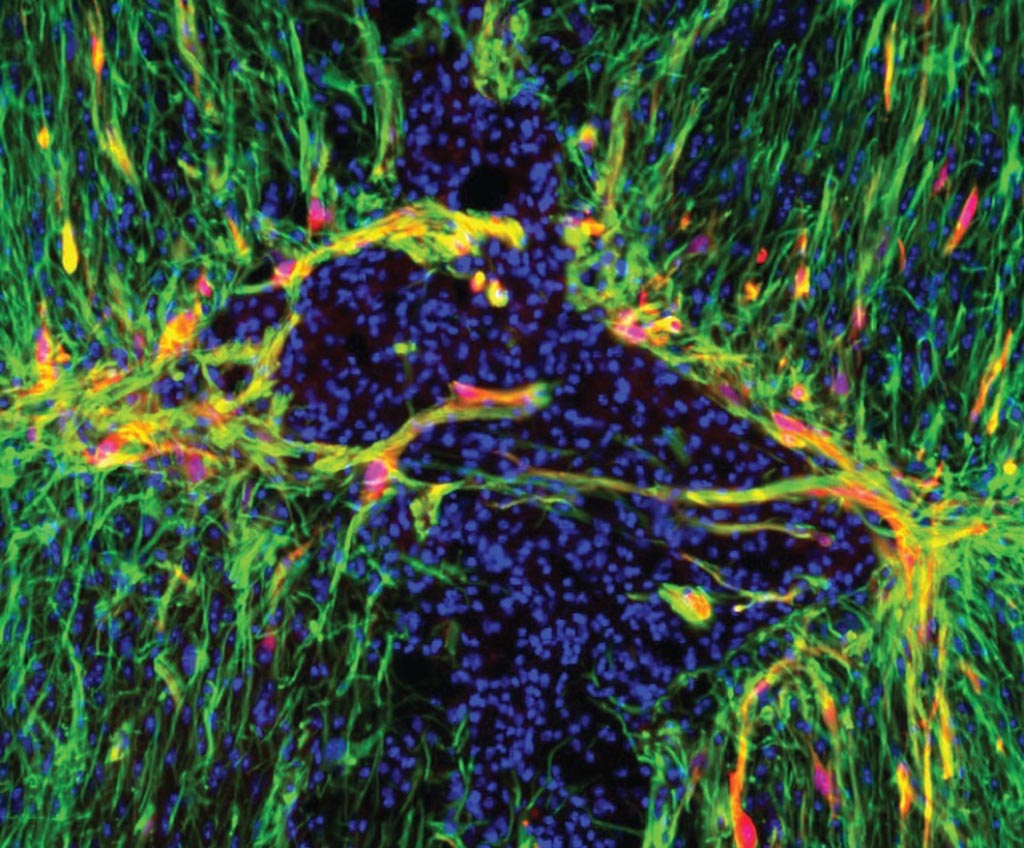Critical Brain Cell Repair Gene Identified in Study
By LabMedica International staff writers
Posted on 10 Apr 2018
Repair of damaged brain cells depends on the process of astrogliosis, which has been shown to be regulated by the MAP3K13 (also known as leucine zipper-bearing kinase [LZK]) gene.Posted on 10 Apr 2018
Astrogliosis (also known as reactive astrocytosis) is an abnormal increase in the number of astrocytes due to the destruction of nearby neurons from CNS trauma, infection, ischemia, stroke, autoimmune responses, or neurodegenerative disease. In healthy neural tissue, astrocytes play critical roles in energy provision, regulation of blood flow, homeostasis of extracellular fluid, homeostasis of ions and transmitters, regulation of synapse function, and synaptic remodeling. Astrogliosis changes the molecular expression and morphology of astrocytes, causing scar formation and, in severe cases, inhibition of axon regeneration.

Image: Genetically modified astrocytes (red) line the lesion border in the injured spinal cord. A new mouse study showed that triggering a gene inside astrocytes activated the star-shaped cells and may improve the brain’s ability to heal from a range of debilitating conditions, from stroke to concussions and spine injuries (Photo courtesy of Dr. Meifan Amy Chen, University of Texas Southwestern Medical Center).
In a recently published paper investigators at the University of Texas Southwestern Medical Center (Dallas, USA) used genetic loss and gain-of-function analyses in vivo, to show that the conserved LZK promoted astrocyte reactivity and glial scar formation after CNS injury.
The investigators reported in the March 27, 2018, issue of the journal Cell Reports that inducible LZK gene deletion in astrocytes of adult mice reduced astrogliosis and impaired glial scar formation, resulting in increased lesion size after spinal cord injury. Conversely, LZK overexpression in astrocytes enhanced astrogliosis and reduced lesion size. Remarkably, in the absence of injury, LZK overexpression alone induced widespread astrogliosis in the CNS and upregulated astrogliosis activator genes pSTAT3 and SOX9.
"We have known that astrocytes can help the brain and spinal cord recover from injury, but we did not fully understand the trigger that activates these cells," said contributing author Dr. Mark Goldberg, professor of neurology and neurotherapeutics at the University of Texas Southwestern Medical Center. "Now we will be able to look at whether turning on the switch we identified can help in the healing process."
Related Links:
University of Texas Southwestern Medical Center













